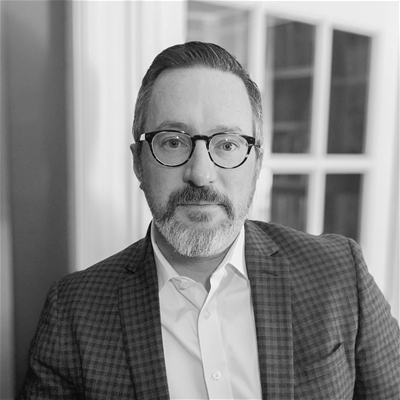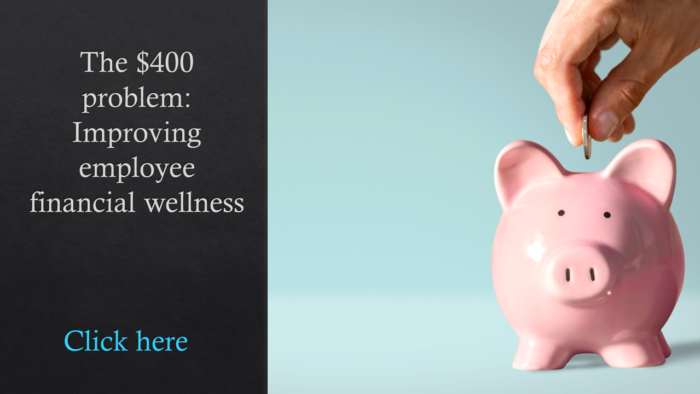COVID-19 undoubtedly has been financially devastating for many employees. But there’s a bright side to how the pandemic has changed things, financially speaking: It’s given new urgency—and meaning—to how employers address financial wellbeing for their employees.
Pre-pandemic, many organizations thought of financial health as the activities within their retirement plans, along with an education component to help employees, explains Matt Bahl, vice president and head of workplace financial health at the Financial Health Network. But the pandemic blew everything wide open, accelerating trends and spurring innovation especially around how employers are expected to help employees manage their day-to-day finances.
“It really accelerated and expanded the definition for many employers about what they consider to be financial health and wellness,” says Bahl.
The pandemic, he says, provided employers with unprecedented access to their workers’ lives—which, in turn, inspired them to get them more aggressive in helping workers through a myriad of challenges.
“I think when employers started to see the lives of their people beyond just the four walls of their employment status, it really broadened their perspective on the types of solutions we should be thinking about delivering to meet the financial health challenges of our people,” says Bahl, who will address the financial state of employees, as well as how to choose the right financial wellness solutions for them—and why it’s important—April 6 at HRE’s Health & Benefits Leadership Conference.
Ahead of his session, HRE caught up with Bahl about innovation in the space and why financial solutions have often fallen short.
HRE: There’s a lot of innovation happening in the financial wellness space. Tell me about some of the solutions you’re seeing now.

Bahl: The traditional [solutions] have largely been providing education-based programs. They’ve continued to stay relevant because people are always thirsty for more education. I think what we’ve consistently seen, though, is at times those education programs attract those that are already inclined to be thinking about financial wellness, which is not always who the employer is trying to engage because it doesn’t really reach to the depth of the workforce. I think that’s really where you’ve seen solutions that have started to integrate into payroll services—so, you think about some of the evolutions of earned wage access, or payroll collateralized loans or solutions of that build, which really help individuals through payroll integration solve for immediate, day-to-day financial challenges.
In addition to that, I think some of the things that are really resonating with companies are emergency savings [solutions]. There’s a whole host of mechanisms in which to build an emergency savings program. Certainly, the retirement plan is one way to do it. But we’re seeing a lot more companies also think about independent emergency savings solutions.
Related: The ‘most needed employee benefit,’ according to financial guru Suze Orman
HRE: Why is it important to choose the right solutions for your workforce? What’s at stake?
 Bahl: It matters for a couple of reasons. Number one, I think employers spend a lot of money on solutions that no one uses. So, it’s the pure economic value of the solutions they provide. Number two, I think a big root cause of that is that employers have not upskilled the levers they can use in order to actually listen to their workforce and understand what their needs are, and design programs that are rooted in their needs, as opposed to relying on macro trends that may or may not make sense for them.
Bahl: It matters for a couple of reasons. Number one, I think employers spend a lot of money on solutions that no one uses. So, it’s the pure economic value of the solutions they provide. Number two, I think a big root cause of that is that employers have not upskilled the levers they can use in order to actually listen to their workforce and understand what their needs are, and design programs that are rooted in their needs, as opposed to relying on macro trends that may or may not make sense for them.
One of the big gaps that continues to persist is the way in which companies actually listen to their workers in order to decide: What are the benefits that are going to be the most valuable for our workforce? We’re actually seeing a lot of companies that are completely scaling back some of the benefits because people are not using them. So, really trying to say, “Hey, we should be rooting our solutions around the needs of our workforce; we need to be more nimble, more flexible. And we need to provide things that people actually want to use, as opposed to a gigantic selection, which behavioral science will tell us is a recipe for ensuring that nothing is selected.”
Related: Biggest financial health opportunity? Focusing on short-term help
And so, to me, it’s really about better knowing what your workers want. And yes, there’s going to be variety and all those things, but understanding what your workers want gives you a better position to then go select the vendors that are best positioned to solve whatever challenges your workers are saying are the most pressing for them.
HRE: Is having regular communications and pulsing your employees about what they want important? Is that part of it?
Bahl: That’s part of it. But I think the companies that have made the most progress and have seen the biggest impacts are those where their leaders go and talk to their people. They don’t hide behind spreadsheets; they don’t hide behind their desks. They’re actually out daily engaging and building relationships, particularly with their frontline workers. Those are the companies that we’ve seen that have made the most strategic investments and have some of the strongest business performance.
Those pulses are great, particularly for larger employers. Do that. But if that’s the only thing you’re doing and you’re not actually out there engaging in conversation, in focus groups—that’s going to land us where we are today, which is a lot of cool solutions that no one uses because you didn’t actually get to that next level about what people need and what they say.
The post The first step in finding the right financial solution for employees? Ask what they need appeared first on HR Executive.